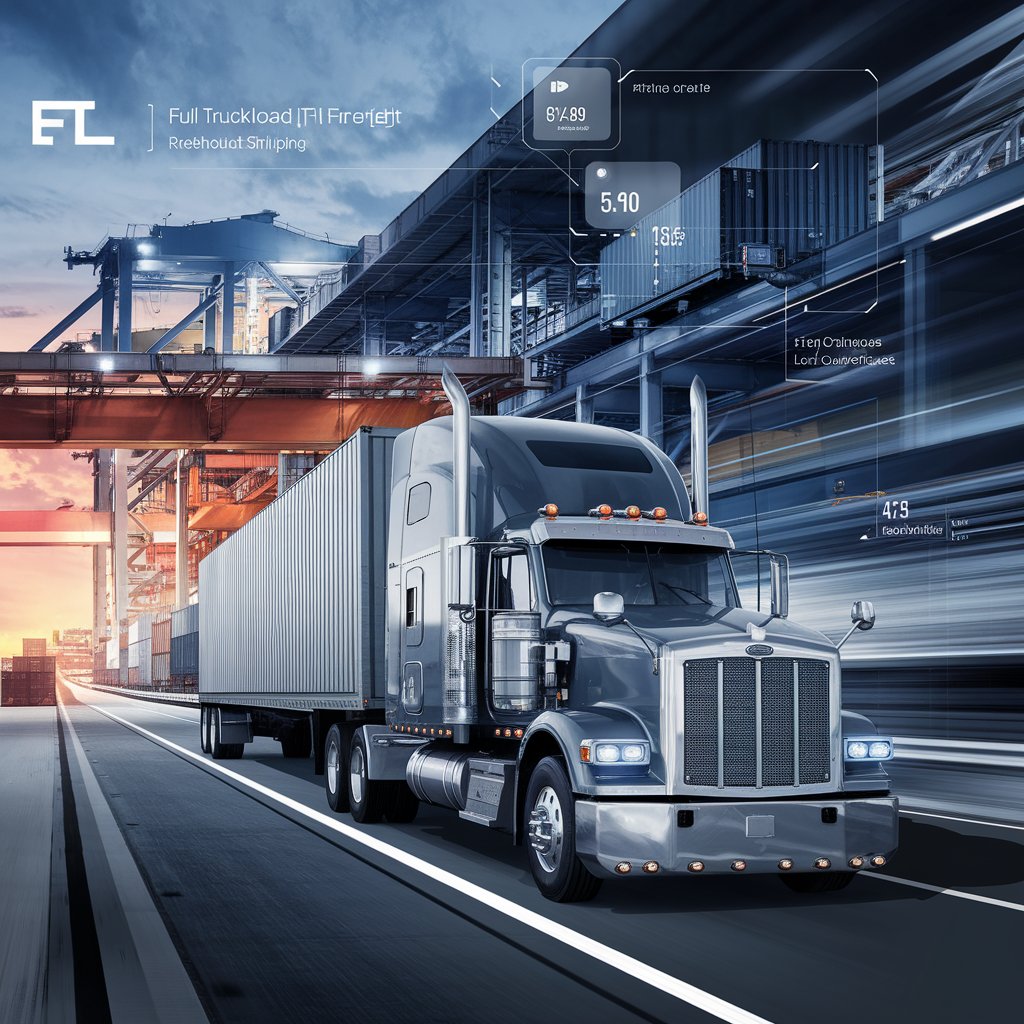FTL Meaning: Understanding Full Truckload Shipping in Logistics

Key Takeaways:
- FTL means Full Truckload
- It’s a shipping method where one customer’s goods fill an entire truck
- FTL is efficient for large shipments and time-sensitive deliveries
- It differs from LTL (Less Than Truckload) shipping in several key ways
Introduction to FTL Shipping
In today’s fast-paced world of commerce, efficient transportation of goods is crucial. Among the various shipping methods available, Full Truckload (FTL) shipping stands out as a key player in the logistics industry. But what exactly does FTL mean, and why is it important? Let’s dive deep into the world of FTL shipping to understand its significance and how it impacts businesses and consumers alike.
Defining FTL: More Than Just a Full Truck
While the term “Full Truckload” might seem self-explanatory, there’s more to FTL shipping than just filling up a truck. Here’s what you need to know:
- Dedicated Capacity: In FTL shipping, the entire truck’s capacity is dedicated to a single shipment from one customer.
- Direct Transit: FTL shipments typically move directly from the pickup location to the delivery destination without intermediate stops.
- Flexible Sizing: Despite the name, FTL doesn’t always mean the truck is physically full. It refers to the shipping arrangement rather than the actual load size.
- Diverse Truck Types: FTL can involve various truck types, including dry vans, refrigerated trucks, flatbeds, and more, depending on the cargo’s needs.
Understanding these aspects helps clarify what FTL truly means in the context of logistics and freight transportation.
FTL vs. LTL: Understanding the Difference
To fully grasp the meaning of FTL, it’s essential to compare it with its counterpart, LTL (Less Than Truckload) shipping. Here are the key differences:
Aspect | FTL (Full Truckload) | LTL (Less Than Truckload) |
Load Size | Entire truck capacity | Partial truck capacity |
Transit Time | Generally faster | Can be slower due to multiple stops |
Handling | Minimal handling | More handling as goods are consolidated |
Cost | Higher per shipment, lower per unit | Lower per shipment, higher per unit |
Best For | Large shipments, time-sensitive goods | Smaller shipments, cost-sensitive goods |
This comparison highlights why understanding the FTL meaning is crucial for businesses deciding on their shipping strategy.
Benefits of FTL Shipping for Businesses
Now that we’ve defined what FTL means, let’s explore why businesses might choose this shipping method:
- Faster Transit Times: Direct shipping means goods arrive quicker.
- Reduced Risk of Damage: Less handling and fewer stops minimize the risk of cargo damage.
- Enhanced Security: Dedicated trucks reduce the risk of loss or theft.
- Cost-Effective for Large Shipments: While more expensive per trip, FTL can be more economical per unit for large quantities.
- Greater Control: Shippers have more control over pickup and delivery times.
These benefits make FTL an attractive option for many businesses, especially those dealing with large volumes or time-sensitive goods.
Common Misconceptions About FTL
Despite its widespread use, there are several misconceptions about what FTL means:
- Myth: FTL is always more expensive than LTL. Reality: For large shipments, FTL can be more cost-effective per unit.
- Myth: FTL trucks must be completely full. Reality: FTL refers to the shipping arrangement, not necessarily the physical fullness of the truck.
- Myth: FTL is only for big businesses. Reality: Any business with sufficient volume for a full truck can benefit from FTL shipping.
- Myth: FTL and LTL are the only shipping options. Reality: There are various other methods, including partial truckload and intermodal shipping.
Clearing up these misconceptions helps businesses make more informed decisions about their shipping needs.

FTL Terminology: Speaking the Language of Logistics
To fully understand what FTL means in practice, it’s helpful to be familiar with some common terms:
- Dock-to-Dock: FTL shipments that are loaded and unloaded at shipping docks.
- Live Load/Unload: When the driver waits while the truck is being loaded or unloaded.
- Drop and Hook: A method where a loaded trailer is left at the destination and an empty one is picked up.
- Deadhead: When a truck travels empty, often to pick up a new load.
- Detention: Charges applied when loading or unloading exceeds the agreed-upon time.
Familiarizing yourself with these terms will help you navigate the world of FTL shipping more effectively.
The Evolution of FTL Shipping
The meaning of FTL has evolved along with the logistics industry. Let’s look at how FTL shipping has changed over time:
- Traditional FTL: Basic point-to-point transportation with minimal technology.
- Tech-Enhanced FTL: Introduction of GPS tracking and digital documentation.
- Integrated FTL: Part of broader supply chain management systems.
- Green FTL: Focus on sustainability with fuel-efficient trucks and optimized routes.
- Smart FTL: Incorporation of AI and IoT for predictive analytics and real-time optimization.
This evolution shows how the meaning of FTL has expanded beyond simple transportation to become a key part of sophisticated logistics strategies.

FTL Shipping in Different Sectors
The meaning and application of FTL shipping can vary across different industries:
- Retail: Used for restocking stores and fulfilling large online orders.
- Manufacturing: Transporting raw materials and finished products.
- Agriculture: Moving perishable goods quickly to maintain freshness.
- Automotive: Shipping vehicles and parts to dealerships and assembly plants.
- Construction: Transporting large equipment and building materials to job sites.
Each sector leverages FTL shipping in unique ways, demonstrating the versatility of this shipping method.
Future Trends in FTL Shipping
As we look to the future, the meaning of FTL is likely to evolve further:
- Autonomous Trucks: Self-driving vehicles may revolutionize FTL shipping.
- Blockchain Integration: Enhanced transparency and security in tracking and documentation.
- Sustainable Solutions: Increased use of electric and alternative fuel trucks.
- AI-Driven Optimization: More sophisticated route planning and load matching.
- Last-Mile Integration: Seamless coordination between FTL and last-mile delivery services.
These trends suggest that while the core meaning of FTL will remain, its implementation will continue to advance.

Conclusion: The Importance of Understanding FTL in Modern Supply Chains
In conclusion, understanding what FTL means goes beyond knowing that it stands for Full Truckload. It encompasses a comprehensive shipping strategy that plays a crucial role in modern supply chains. From its basic definition to its evolving applications across various industries, FTL shipping continues to be a vital component of efficient logistics operations.
For businesses, grasping the full meaning of FTL shipping is essential for making informed decisions about transportation strategies. It can lead to cost savings, improved efficiency, and better customer satisfaction. For consumers, understanding FTL helps in appreciating the complex journey products undertake before reaching their doorstep.
As the logistics landscape continues to evolve, staying informed about FTL shipping and its developments will be crucial for anyone involved in the world of transportation and supply chain management. Whether you’re a business owner, logistics professional, or simply curious about how goods move around the world, understanding FTL is key to navigating the complex and fascinating world of modern logistics.
